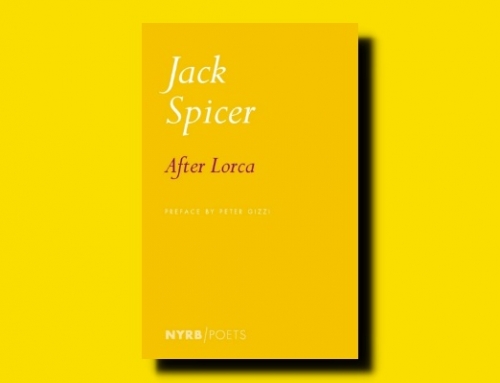Conversations by César Aira (Las conversaciones, 2007) translated from the Spanish by Katherine Silver New Directions (2014) 96 pp
At the beginning of César Aira’s novella The Literary Conference (my review here), we learn of a treasure hidden centuries ago in the ocean, accessible only to someone who possesses the ability to solve the puzzle of the Macuto Line, an elaborate rope contraption that wraps around a rock before plunging into the ocean toward the treasure. But in such a case the treasure is almost beside the point: the joy is in the puzzle, which is itself a great work of art. Such a treasure and puzzle may not exist in reality, yet I often feel as if each new Aira book is the Macuto Line, a wonderfully alluring puzzle that, whether we crack it or not, presents an elaborate design and the promise of unique treasures. And what a treasure we have in the latest to arrive in English, Conversations.

Though time will tell as things settle out, this is my favorite Aira novella in years, perhaps just ranking behind my two all-time favorites, Ghosts and An Episode in the Life of a Landscape Painter (my reviews here and here, respectfully). Not that Conversations is anything like those two, other than in its Aira zaniness.
In one sense, this book is incredibly narrow: the entire story takes place as our protagonist (I’ll call him César, though he is unnamed) lies in bed remembering a conversation he had earlier that day. In another sense, the book is incredibly expansive, taking us not only to the café where the conversation took place but also to Hollywood, to the mountains of Eastern Europe, to a CIA operation, to an early twentieth-century beauty pageant, to the beginning of time when a strain of algae developed the kernel of what would become a deadly form of toxic algae, and so on.
So as the story begins, César lies in bed, the kernel in which this entire story is contained. He thinks back on his conversations of the day, something he does every single night. Indeed, now that he no longer works, he spends his days participating in conversations in order to get “material for memory.” He is, he says, “a man of realities,” and yet his days are relatively narrow. It’s the conversations, the memories he is forming, that allow him to broach any kind of larger “reality.” And, speaking of reality, the conversation he had on this particular day is troubling him as it seems to revolve around the very issue of reality, realism, verisimilitude. The conversation will end this way:
So I said: “Everything is fiction.”
And he, also not one to retreat: “Or, everything is reality. Which is the same thing.”
So how do we get from that bed, through all those strange locals and events across time that I mentioned above, to that final paradox? Well, dear friends, that’s the beauty of the Macuto Line Aira has created in Conversations.
But to discuss some of the knots in particular, the troubling conversation from earlier in the day started out rather simply — the two men were talking about a movie that was on the television the night before and that each had on in the background as they went about their night, periodically paying close attention, but just as frequently drifting away to, say, get a snack or answer the telephone.
César talks a bit about how shabby the film was, the most egregious problem with production, in his mind, being that the goatherd who has always lived in the mountains was wearing a Rolex watch. This is obviously an oversight that shows how ill-prepared the crew for this film was. But to César’s confusion — and ultimate alarm — his friend sees no problem with this. It’s not just that he sees no problem with an anachronism or incongruity in the film, managing to see around it; he actually sees nothing strange about such a goatherd wearing the Rolex.
For César, “that nonexistent goatherd, created by the imagination, his life circumscribed to an hour and a half of pulses of light and color, had to maintain complete factual coherence in order to remain plausible.” He launches into a fun — and I mean fun — back and forth about, of all things, verisimilitude:
This is a conventional term that includes everything mankind does in its perennial war against the absurd.
His friend goes along with this, and says, that’s fine; there’s still no problem with the watch. Indeed, that’s what makes the film — the kernel — interesting:
But if the goatherd in the story had a Rolex, and we had posited that the “error” had been committed, it had to be fixed, that is, made verisimilar. The story’s interest and novelty would emerge from such an operation.
For those who’ve read Aira before, you know that he mixes the mundane and the absurd often. Strangely, we accept the absurd itself more than we might a goatherd wearing a Rolex, and so the story of the toxic algae and Señorita Wild Savage are actually stories that help us make sense of a watch!
What this all leads to (though, again, so much of the joy is in the puzzle itself, even though the treasure is grand) is a brilliant examination of identity, memory, and perception, some of Aira’s pet themes, but addressed here in a completely new way: as fragments — or kernels — from which we conceive something that approximates an entirety, something we consider to be reality.
So dig in. Let Aira warp your perceptions for a while. No one has more fun doing it.








Great review, thanks. I enjoyed Conversations, I found it similar in its make-up to The Miracle Cures of Dr. Aira. But my favourites remain An Episode in the Life of a Landscape Painter and Varamo. We are fortunate to have a publisher like New Directions that we can depend on to bring out another Aira translation each year, I am looking forward to next year’s The Musical Brain and Other Stories already.